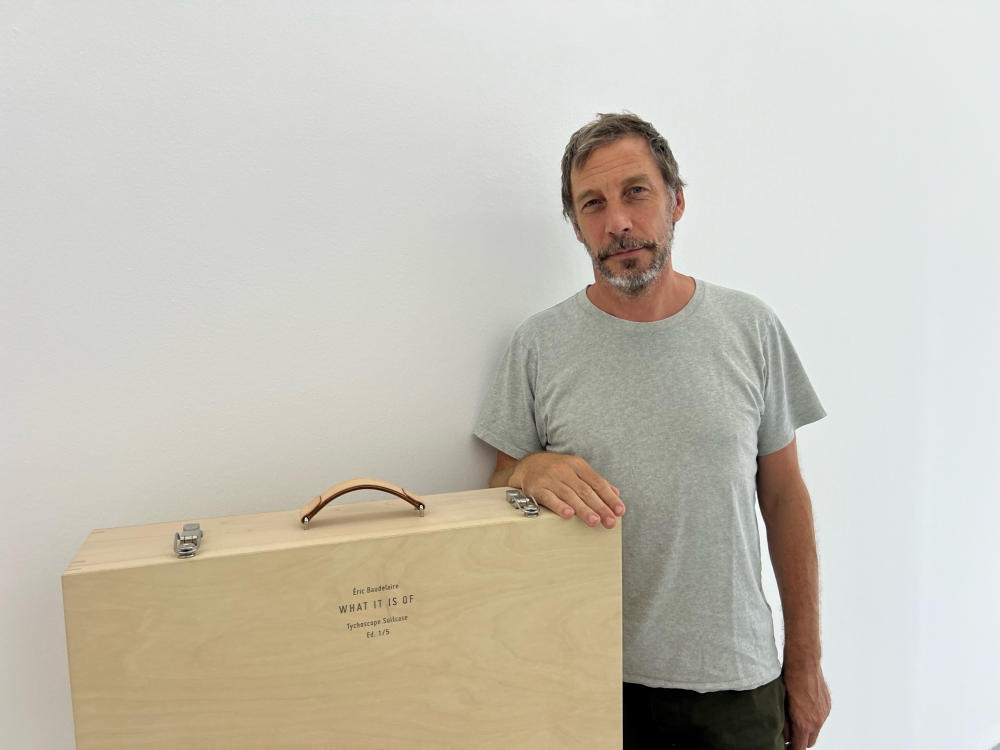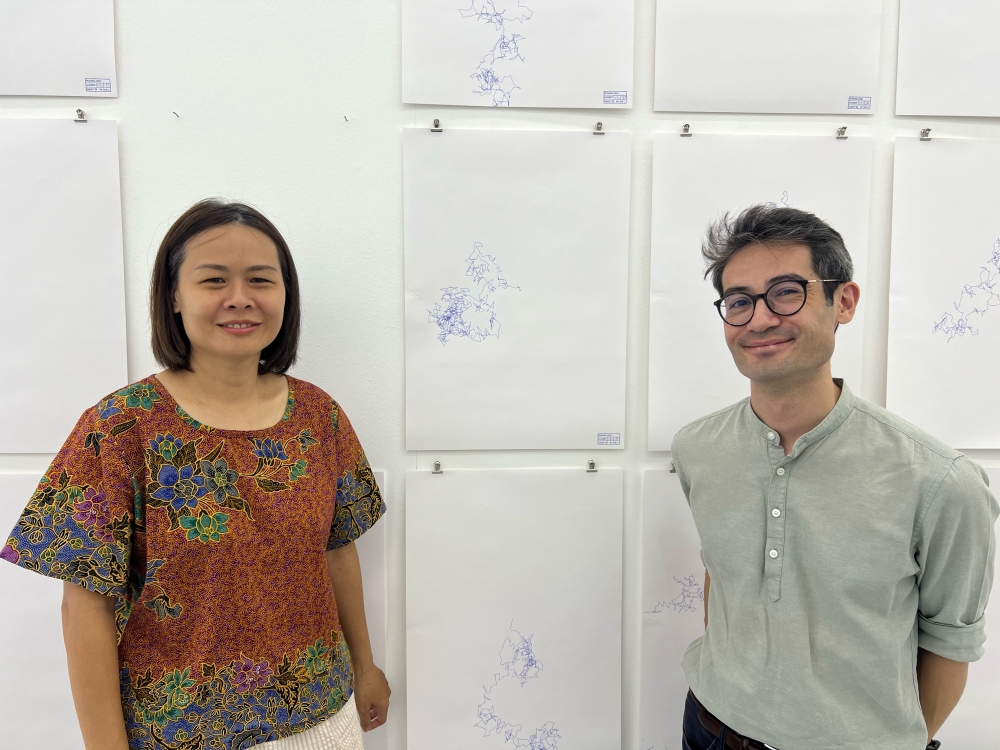GEORGE TOWN, Aug 24 — What if telekinesis were not just the stuff of science fiction, but actually real?
What if humans could move a tychoscope to draw patterns using just the power of their minds?
These are the questions that French artist Éric Baudelaire hopes to explore in his interactive exhibition “What It Is Of”.
The exhibition invites visitors to become part of the artistic experiment of using their mind to control a tychoscope — a cylindrical robot the size of an average tin can that moves in a random rotation — to move towards them.
Participants are given a 30-minute session each where they are seated at a table with the tychoscope placed on a piece of paper in front of them.
They are left alone to silently try to control the device to move towards them using only their minds as it creates random patterns and drawings on the paper.
The resulting drawing will then be put up as part of the exhibition.

On another side of the exhibition, Baudelaire has allowed the tychoscope to move on its own without human presence.
“This is to provide a moment for people to see what they feel about this and whether their presence makes a difference in the drawings,” he said.
The aim was to have 300 drawings made with the presence of humans and another 300 drawings will be made without human presence for comparison.
“I am an artist, there is no scientific goal to this, these are drawings made by the mind instead of hands and I want visitors to make up their own minds about it,” he said.
“This is why it is called ‘what it is of’, it is an invitation for visitors to imagine what it is of, it is what they think it is about,” he added.
The idea for the exhibition came from an actual scientific experiment that Baudelaire took part in when he was around eight years old.
He had taken part in an experiment in a laboratory where his mother, Isabelle Baudelaire, worked.
The experiment, that was run from 1980 to 1981, was part of a programme run by the Trasbior laboratory at the French industrial conglomerate, the Compagnie générale d’électricité (CGE).
The programme set out to perform and analyse 1,000 experiments but it was closed down after 215 sessions.
The tychoscope was also long gone.
Baudelaire said he remembered he was told to sit before a big round table with the tychoscope on the table and told to try to draw the device towards him with his thoughts.
Though he could not remember what patterns the device had drawn then, the experience left an impression on the artist.

In 2020, Baudelaire began exploring his family’s history of parapsychological research, including the work of his Nobel-prize- winning great-great-grandfather, and recreated a contemporary replica of the original tychoscope.
That sparked the beginning of “What It is Of“ that was held first in Paris, France and had a second edition in Berlin.
Baudelaire said 300 drawings (with human presence) and 300 (without human presence) were created in the first edition while another 400 and 400 were created in Berlin.
“We hope to create 300 and 300 here in Penang, if we get as many visitors,” he said.
He had chosen to hold the exhibition at Blank Canvas in Penang after the art gallery founder Leong Kwong Yee invited him to hold it here.
Another unique point of the exhibition was that everything that formed part of the experimental art exhibition, the drawings and the tychoscopes, fit into a large box-like suitcase.
“It is a conceptual piece where everything is in the box, the machine, the archive of drawings, so the whole exhibition fits in it,” he said.
After Penang, Baudelaire will head back to Paris and he hoped to continue holding the exhibition for as long as possible.
“I am not sure when the next one will be held but I hope to continue to do this for the rest of my life,” he said.
The experiential exhibition intrigued visitors who tried it out.
One of them Joel Lim Du Bois, 43, said it was interesting to see how the machine reacted to him.
“I started out with my eyes open but after a while it became distracting and a bit stressful so I closed my eyes and tried to control it to move towards me,” he said.
He said at the end of the 30 minutes, it was interesting to note that the device did move towards him slightly.
Another participant, Tan Sueh Li, 43, felt as if it was like a supernatural experience.
“It felt like it was coming towards me and then it started moving around,” she said.

All drawings by participants will be put up in the exhibition space throughout the length of the exhibition.
Baudelaire is an artist and filmmaker based in Paris.
He has had exhibitions at Centre Pompidou, MMK Frankfurt, Kunsthalle St Gallen, Museo Reina Sofia, Bergen Kunsthall, (formerly known as) Witte de With, Bétonsalon, Fridericianum, Beirut Art Center, Gasworks, Hammer Museum, and showed work in the Whitney Biennale, Sharjah Biennial, Yokohama Triennale, Mediacity Seoul, and Taipei Biennial.
He was the recipient of the 2019 Marcel Duchamp prize, and recently published a monography titled “Make, Do, With” at Paraguay Press.
“What It Is Of” opens today ( Aug 24) until November 3 and is open to public on Fridays, Saturdays and Sundays from 12pm to 7pm.
Those interested to participate will need to book sessions by contacting Blank Canvas through WhatsApp at 0162466814 or visit their website at blankcanvas.my.






















